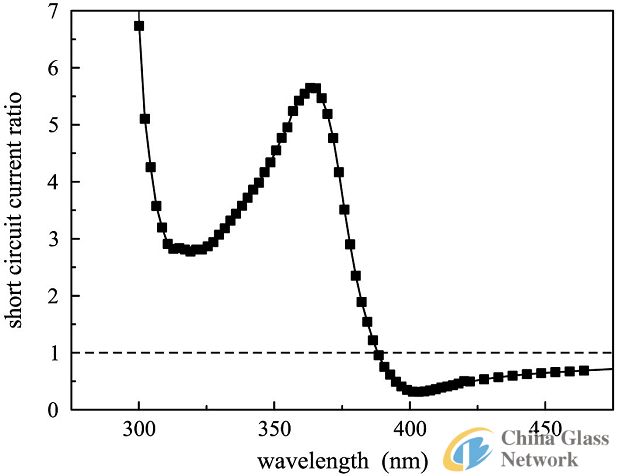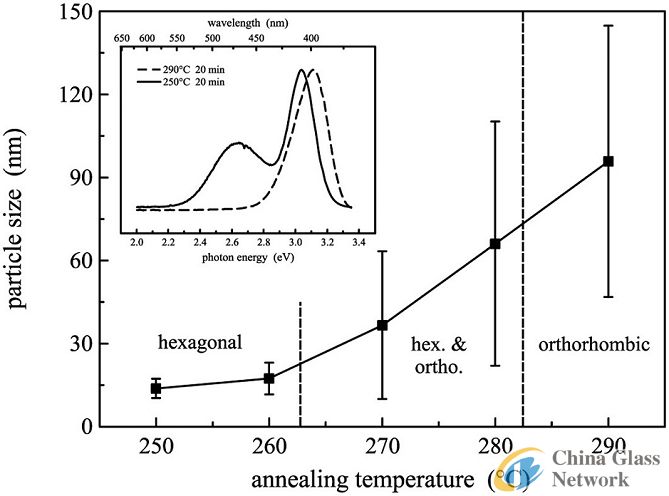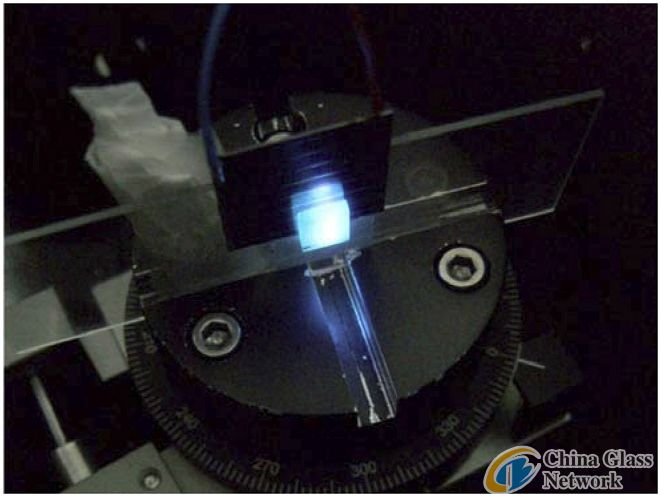Downshifting describes the absorption of a high-energy photon and the subsequent emission of a photon with lower energy that can be absorbed more efficiently by a solar cell. Eu2+-doped fluorozirconate (FZ)-based glass ceramics have suitable optical properties for this purpose. They can be excited in the UV spectral range, leading to emission in the blue spectral regime. Here, the conversion efficiency depends mainly on the host material's phonon energy (lattice vibrations). FZ-based glasses are well known for their low phonon energies and, therefore, are desirable hosts as downshifters. They are based on a modified glass system, so-called ZBLAN, which is an abbreviation for glasses made of a mixture of zirconium (Zr), barium (Ba), lanthanum (La), aluminum (Al), and sodium (Na) fluorides. In our case, they are additionally doped with chlorine ions to enable the growth of barium chloride (BaCl2) nanoparticles upon thermal treatment (annealing) in which the Eu2+ is incorporated.
Annealing for 20min at temperatures between 260 and 280°C leads to a phase transformation from hexagonal to orthorhombic BaCl2. (The latter describes a system of crystallization characterized by three unequal axes at right angles to each other.) At a temperature of 290°C only orthorhombic-phase BaCl2 is observed. The size of the BaCl2 nanoparticles is between 10 and 90nm (see Figure 1).
Europium can be incorporated in the glass in its divalent and trivalent states. Interestingly, Eu2+ does not fluoresce in the FZ base glass, although it is clear from electron paramagnetic resonance1 and Mössbauer spectroscopy2 that it is present in the glass. However, Eu3+ shows its typical emissions in the red spectral range. On annealing, some of the Eu2+ ions are incorporated into the BaCl2 nanocrystals, leading to intense Eu2+-related and BaCl2 phase-dependent fluorescence under UV excitation (see Figure 1, inset).
For fluorescent (and, in particular, photovoltaic) applications, the metastable hexagonal phase is preferred because of its larger integral fluorescence intensity. The orthorhombic phase is attractive for medical x-ray imaging because of its storage effect. This means that electron-hole (charge-carrier) pairs are ‘stored’ in the glass plate until they are released by a scanning laser beam.
Placing an annealed glass ceramic on top of a conventional silicon solar cell and comparing the corresponding short-circuit current to that of a cell without a cover glass gives a higher short-circuit current, especially for the UV spectral region. That is, the downshifting glass ceramic leads to enhancement of solar-cell efficiency in the UV range. Figure 2 illustrates the experimental setup. The increase at approximately 360nm (see Figure 3) is due to a Eu2+ excitation band. For wavelengths longer than 400nm, the short-circuit ratio drops to below ‘1,’ which implies a decrease in the solar-cell efficiency in this spectral range. This decrease is caused by scattering effects of the incident light at the glass-ceramic surface.

In summary, on excitation in the UV spectral region, Eu2+-doped FZ-based glass ceramics show strong downshifted fluorescence in the visible spectral region. Thermal annealing of the glasses leads to precipitation of fluorescent BaCl2 nanocrystals. Initial experiments have shown that using these Eu2+-doped glass ceramics as a downshifting top layer leads to an increased short-circuit current in the UV spectral range. Our next steps will be to create completely transparent glass ceramics to avoid scattering losses in the visible and near-IR spectral ranges and to create glass ceramics predominantly containing hexagonal BaCl2 nanocrystals for high light output.



